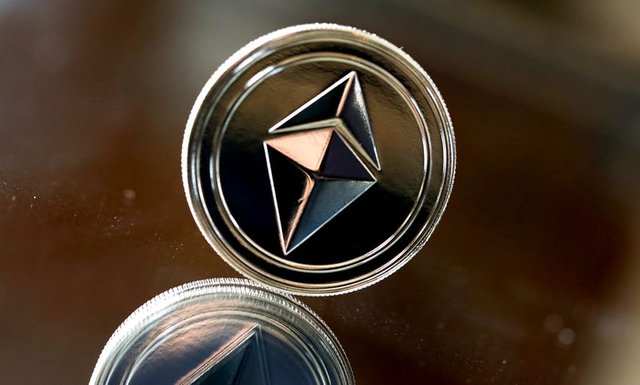
The Ethereum “Merge” may have a big impact on the blockchain’s native token Ether.
Feel the burn
At a time when the world is worried about inflation, Ether -- the second-biggest cryptocurrency -- is moving toward deflation. And for proponents, it props up their bullish case.
In crypto parlance, “deflation” has nothing to do with the price of beef, housing, or fuel. Instead, it relates to the supply of a particular token, and how much it increases or declines every year. This of course has a bearing on its underlying value.
Many crypto networks, including the Ethereum blockchain that the namesake token runs on, continuously issue new coins as rewards to attract and keep key participants tied to that ecosystem, with the tokens going to so-called miners, whose powerful computers order transactions on their platforms. In the case of Ether, issuance is running at a rate of about 4.5% a year. At the same time, thanks to a software upgrade made about a year ago, the network is also burning -- essentially, destroying -- a portion of the transaction fees that people pay in Ether to use the network. Net of the burn, the increase in supply is roughly 2%. It’s still a boost, but much less of one.
An even bigger change is coming with Ethereum’s newest upgrade, the Merge, which is expected to be completed next week. The upgrade will effectively shift the blockchain from using miners to much more energy-efficient validators for ordering transactions and in doing so, will slash the amount of new Ether issued to reward various key entities involved in the process by about 90%. At the same time, the network will continue to burn Ether. That should bring Ether’s net coin supply inflation to zero or less, according to calculations by the Ethereum Foundation. Crypto tracker Ultra Sound Money predicts Ether supply could peak right around the time of the Merge before beginning to decline.
With Ether’s supply stable, or even decreasing, that could potentially make every existing coin more valuable, some believe. And in fact, Ether has gained almost 4% so far in September ahead of the Merge.
Estimates on when exactly the deflation will kick off differ. Ethereum infrastructure provider ConsenSys, for instance, expects deflation to start in the spring of 2023. After all, Ether burn is directly tied to transaction volume on the network, and it’s lately been slack. Ethereum may also experience bugs or other hiccups in weeks or even months after the Merge that could temporarily depress activity further.
Another note of caution for Ether enthusiasts: Ethereum’s developers have debated and implemented changes to the network’s coin supply structure many times before. So even if Ether does become deflationary, it may not stay so forever. And of course, with so much crypto fueled by speculation, market moves by coins like Ether often have little to do with the fundamentals.
Still, in a world where inflation is eroding the purchasing power of hard currencies, the idea of deflation serving as a potential respite in at least one corner of crypto certainly has its appeal.